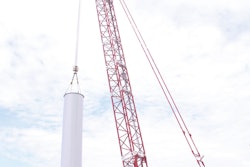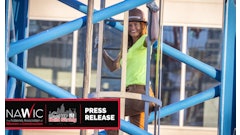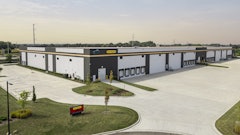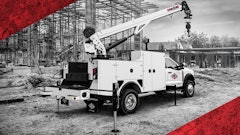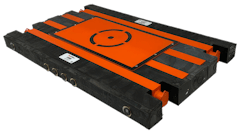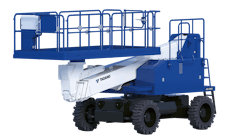
The Challenge:
Two crawler cranes configured at different heights helped construct taller wind turbines and combat the increase in wind shear
The Players:
RPM Access, LLC
Nordex USA, Inc.
The Process:
Recently, Developer RPM Access (RPMA), LLC of West Des Moines, with help of two Terex CC2800-1 crawler cranes, completed the Hawkeye Wind Farm project in rural Fayette County, Iowa. Hawkeye’s 15 wind turbines generate enough power to provide for the needs of more than 12,000 typical family homes each year. More importantly, the clean energy source will save at least 60 tons of carbon dioxide, 360 tons of sulfur dioxide and nearly 225 tons of nitrogen oxide emissions.
“Heavy lift cranes for turbine construction can be the project bottleneck,” explains Steve Dryden, president of RPMA. “Heavy lift contractors will typically complete the big jobs first,” leaving the smaller projects like Hawkeye waiting for a crane to become available.
RPMA has learned that efficiency is the key to getting heavy lift cranes like the Terex CC2800-1 at the jobsite when it’s needed. The company works with its contractors to maximize the number of lifting days for turbine erection. Prior to bringing in the heavy lifting equipment, Nordex USA, Inc. of Chicago, Ill., acted as the general contractor and started the project in November of 2011. The first projects were to develop the 4.2 miles of access roads and install 11.8 miles of underground cable.
The following April, crews began pouring 15 turbine foundations, which consisted of up to 605 cubic yards of concrete. By the time the two CC2800-1 crawler cranes were ready to be brought on site, RPMA and Nordex made sure the infrastructure was in place, so the cranes were on site for as the shortest time period possible.
The 328-foot-tall turbines were erected on an average of one turbine every two to three days. Each turbine consisted of seven lifts: five tower segments; a nacelle consisting of a deck, generator, gearbox and cooling and control equipment; and a blade and hub assembly. These tall turbines present more of a challenge than the 262.5-foot-tall structures of just a few years ago, as there is a significant increase in wind shear between 262.5 and 328 feet above ground level.
To combat this issue and expedite turbine tower construction, the cranes were configured differently. One CC2800-1 crawler crane was equipped with enough boom and full counterweight to successfully lift the upper two tower sections, nacelle and hub/blade assembly. The second, shorter crane configuration had just enough lattice boom installed in order to erect the first three tower segments to a total height of 203.4 feet.
The Terex CC2800-1 crawler crane led the construction charge, which began in early July, by erecting the first three tower segments. These heavier base sections ranged in weight between 79.6 and 81.7 tons. After completing installation of these three base tower segments, the crawler crane was moved the 0.25 to 1 mile to begin construction of the next tower base.
The second, taller CC2800-1 followed closely behind to complete the turbine installation. This configuration was the workhorse of the project, lifting the top two tower segments, 300-ton nacelle and 37.5-ton blade/hub assembly.
This crawler crane can be quickly configured for wind turbine erection applications with only a few special components, which include reinforced main boom segments and a rigid luffing jib developed specifically with wind power-related applications in mind. Offering a 661-ton maximum lift capacity at a 32-foot, 10-inch radius, the Terex CC2800-1 can erect 328-foot turbines without the need of its Superlift system, which saves time with crane assembly and disassembly.
According to Kevin Lehs, Hawkeye project manager for RPMA, “We had to traverse agricultural fields and cross over county and state highways,” which required the cranes to be partially dismantled at times to transport from tower to tower. “With proper planning, we were able to minimize this to twice, and we were very impressed at the speed of crane assembly and disassembly.”
When the shorter of the two CC2800-1 cranes finished constructing the three base tower segments of the 15th and final turbine, crews reconfigured the crane with a longer boom, so that it could help to “top off” the turbines. This allowed both crawler cranes to work toward each other until construction of all turbines was completed.
Within a month’s time, the turbines were finished, leaving Nordex USA to complete the final steps of the Hawkeye Wind Farm project. In October of 2012, commercial operation of the 36 MW wind farm commenced, bringing power to thousands in northeastern Iowa.





